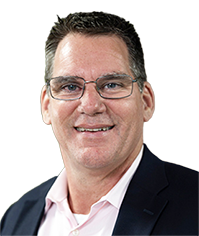August 17, 2023 • 6 min read
How can we transform megaproject delivery to support Saudi Arabia's Vision 2030?
Saudi Arabia is planning some of the world’s largest and most ambitious projects. What shifts are required to deliver these megaprojects in record time?
Saudi Arabia’s landmark Vision 2030 is a catalyst for huge investments to move away from a fossil fuel economy and diversify into sustainable technologies and projects.
But making this vision a reality in a matter of years, rather than decades, will require a fundamental shift in project delivery.
“If we continue to approach projects the way we always have, it won’t be possible to complete these megaprojects on schedule or budget,” says Eissa Aqeeli, SVP and Location Director, Saudi Arabia & Bahrain.
“That’s why our industry needs to deliver projects differently, with new and more efficient approaches. And we need to do it in a way that increases In Kingdom Total Added Value (IKTVA), to drive long-term employment opportunities and economic benefits within Saudi Arabia.”
Why these megatrends are different
As Aqeeli explains, there are two key reasons why Saudi Arabia’s Vision 2030 projects stand apart from other major projects.
“Firstly, these projects are bigger than anything we’ve seen before,” he says. “They require far greater spending on materials and equipment; from raw materials through to manufactured equipment.
“The second key difference is the timelines,” continues Aqeeli. “Vision 2030 projects should be complete within this decade. This means shorter timelines required to engineer, construct, and commission facilities across every stage of the process.”
However, there is another consideration to maximize the benefits of these megaprojects.
Why is IKTVA important for project delivery in Saudi Arabia?
A major priority of Vision 2030 is the drive to extract long term economic and social value beyond the projects themselves, referred to as IKTVA. This means enhancing the reliability of the local supply chain and providing employment and economic opportunities to thousands of Saudi nationals.
“For many years, we’ve built our presence and portfolio of projects in Saudi Arabia,” says Aqeeli. “But now, we need to have more than just a presence. We need to encourage our whole supply chain to increase its value add and investment in Saudi Arabia.

“Our role is expanding as a result, as we look to act as an integrator to procure the equipment needed for projects. For example, the pumps, valves, compressors, and cracking furnaces should be manufactured and assembled in Saudi Arabia, supported by large-scale investments from partners abroad. This adds value directly into Saudi Arabia’s economy and workforce, rather than just outsourcing equipment production to other countries.
“As delivery contractors, it’s our responsibility to make that happen,” continues Aqeeli. “We need to be the collaborators and the central hub of the wheel. And that means being at the cutting edge of project delivery.”

Simplifying, standardizing, and replicating
In our From Ambition to Reality series co-written with Princeton University, we propose five key shifts required to deliver the energy infrastructure in time to achieve net zero by 2050. They also apply to the projects in Saudi Arabia’s Vision 2030.
As Aqeeli explains, a shift with significant potential to accelerate timelines is standardizing key elements of megaprojects.“Standardization presents a range of benefits for project delivery,” he says. “It can accelerate schedule by reducing design and fabrication time of vital equipment.
“It’s also more efficient to break projects into the largest common elements and then copy these elements, rather than designing them from scratch each time,” Aqeeli continues.
“This approach allows us to make the best use of a limited supply chain.
“It also allows manufacturers to tool up once and assemble components on a large scale, which will increase IKTVA, creating permanent jobs and building a secure pipeline of work in Saudi Arabia.”
An example of this approach is our partnership with ABB and IBM, to form a repeatable process to build, operate and manage green hydrogen facilities at scale. Aqeeli believes this approach is also replicable in megaprojects in Saudi Arabia across all sectors.

“For instance, we’re involved in a mega energy project in Oman, where, as an integrator, we’ve standardized key elements across the supply chain,” he explains. “This required us to tool up local fabrication shops to manufacture standardized well-head designs for modules. The engineering requirements dropped to a fraction of the original design work hours, leading to faster and more cost-effective project delivery.”
However, no partner in a project can realize all the benefits of standardization alone. Especially for some of the largest energy, chemicals, and resources projects on earth.
Creating cross-industry partnerships
Aqeeli recognizes that megaprojects depend on many companies coming together to create large and complex infrastructure. He believes success depends on the quality of partnerships across a project.
“We are not manufacturers. We are advisors and project delivery experts. To fulfil this role, we need to be exceptional collaborators with governments, producers, contractors, and consumers.
“Partnerships with manufacturing specialists across supply chains are particularly critical to success in major projects,” continues Aqeeli. “This is about developing new ways of working with fabricators to identify what they need to be able to manufacture standardized modules most efficiently. And then adjust to support their requirements.
“Success also depends on building relationships with local communities to earn the social license to operate, especially given the footprint of the facilities in planning.
“The benefits of these partnerships include faster resolution of issues in projects of this scale, free sharing of ideas to speed up delivery, and greater innovation in facilities.”
Embracing digital throughout project delivery
Digital technologies and access to accurate information on time are critical to megaproject delivery. To unlock their potential, a fundamental shift in business models is required. Aqeeli explains why.
“Think of a megaproject as a giant system with countless moving parts. Any change in these parts has an avalanche effect on everything else, which soon becomes an optimization problem without the right systems in place costing billions of dollars in expenditure every year. The main delivery partner must balance all the moving parts from the various parties in a project and optimize activities to deliver on time and within budget.
“The challenge with traditional approaches to project delivery is that there’s a lack of motivation for parties involved to share information consistently and transparently. This results in poor integration of systems and data, causing delays, reduced work quality, and budget blowouts.
“A control tower is a concept commonly used in the aerospace, manufacturing, and retail industries,” continues Aqeeli. “If we apply this same concept to megaproject delivery, we see there is a need for a similar business-to-business digital platform. Such a platform would service accurate project-relevant information to the main engineering-procurement and construction management (EPCM) contractor, the customer, and other stakeholders, in the same real-time environment to drive action”.
“The aim of this is to give insightful and immediate information to support better decision-making and optimize project performance. This platform is not just a ‘nice to have’.
It’s an essential element to future project delivery. But it does not yet exist. We need to start incorporating this ‘control tower’ element into our project delivery plans with our customers. So, we can provide pure data that is not tainted by human tampering, overly optimistic views, or hidden bad news.”

However, as Eissa describes, this doesn’t happen automatically.
“Digital technologies and platforms can enable more transparent and timely decision-making but will require an agile and collaborative model. One that re-evaluates existing business and delivery processes, adopts innovative tools, and promotes collaboration between project delivery parties.
“Only then can we extract the full potential of digital technologies and put project owners at the forefront of their industries.”
Enabling sustainable development in the Kingdom
Aqeeli believes IKTVA and the enablers of megaproject delivery are closely linked, which will see Vision 2030 redefine what’s possible for decarbonization projects globally.
“These ambitions depend on solving typical bottlenecks in projects, wherever possible. Some of the most common project issues – including supply chain delays, outdated processes, and designing common components from scratch – can add years onto project timelines.
“This is a catalyst to overhaul decade-old supply chains to manufacture more content locally, rethink the most efficient approach to large projects, and use data more effectively to make better decisions,” continues Aqeeli.
“Vision 2030 is an opportunity for Saudi Arabia to show the world how quickly change can happen, at a critical moment in the transformation of the energy, chemicals, and resources sectors. And our network of consultants, engineers, and project delivery specialists in the Kingdom – supported by expert teams across the world – are ready to be the collaborators that make it possible.”
People profiles

Chris Barbary
Senior Vice President, Business Development

Eissa Aqeeli
Senior Vice President and Location Director, Saudi Arabia, Bahrain and Egypt

Mubarak Alkhater
Vice President, Growth and Business Development, Saudi Arabia and Bahrain

Tony Cornwell
Senior Vice President, Asset Management & Operations, Americas
